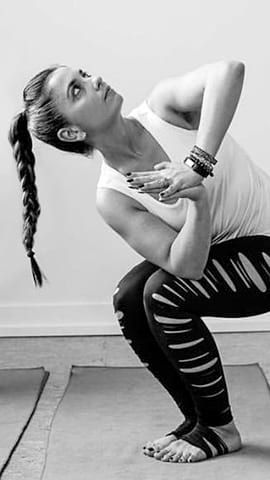Yoga and Pilates are often regarded as complementary practices. Both focus on mind-body awareness and deep breathing, and can help clients build strength, flexibility and stability in different ways.
Cora Timofte, a Hatha, Yin and Vinyasa yoga teacher in Toronto who started practicing in 2011, says in recent years she’s noticed a trend among yoga studios and teachers who are diversifying into Pilates, realising the benefits it can offer their yoga clients.

“As a yoga instructor, I think it’s really important to explore other avenues, maybe get into meditation, teaching Pilates or barre, anything else that can be practiced in a studio setting,” says Cora, who is also the supervisor at Merrithew’s Corporate Training Center.
In a field as competitive as fitness, having knowledge and experience of different modalities will ultimately make you more employable as an instructor, she says.
That’s why Cora’s also considering adding Pilates training to her repertoire, specifically the STOTT PILATES® Intensive Mat-Plus™ course, which will teach her how to design and lead the Level 1 Essential and Intermediate STOTT PILATES Matwork repertoire for a range of clients.
“The more education, tools and skills you have and the more specific they are, the faster and safer you’ll be able to help clients reach their goals,” Cora says. “And the more knowledge you’re providing for yourself and your clients, the better. How beautiful is it to teach clients more about their bodies through their practice?”
Many yoga students often ask her how they can advance to more challenging poses, such as handstand and crow pose. While there are different things they can do within their yoga practice to improve, Cora believes Pilates training would allow them to create a good foundation of strength, stability, balance and functional mobility needed to execute those advanced yoga poses safely and effectively. Pilates training can help people target key muscle groups — like the stabilizer muscles, abdominals, glutes, inner thighs and shoulder girdle — and create healthy mobility in the core, shoulder and hip joints.
“Incorporating Pilates, where there are hundreds of exercises and it’s super focused, fine-tuned and specific, could open a lot of doors for teachers to get creative with their yoga routines so they can help people strengthen certain areas of the body and build up to those poses,” she says.
Cora sees the value in combining the strength and cross-training offered by Pilates with the movement, mobility and openness offered by yoga to prepare for and prevent injury when in more advanced yoga poses.
And unlike lifting weights at the gym, Pilates also emphasizes the importance of being present and connected to your mind, body and space while exercising.
For Cora, who took to yoga because of the feeling of freedom and calm it provided her, this is what makes yoga and Pilates the perfect fit.